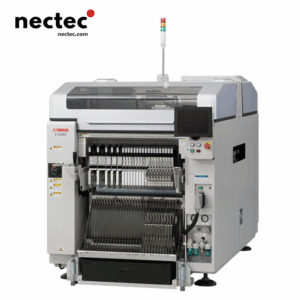近年来,随着先进自动化技术的引入,制造业和物流业经历了一次模式转变。这一领域最重要的进步之一就是将机器视觉系统应用于取放操作。随着企业努力提高效率和精确度,机器视觉技术与机器人取放系统的融合改变了游戏规则。本博客将深入探讨以下方面的细微差别 机器视觉集成取放装置 系统、其优点、应用和未来前景。
了解自动化中的机器视觉
机器视觉是指计算机或机器人系统解释和理解周围环境视觉信息的能力。这项技术包括使用摄像头、传感器和复杂的算法来处理图像,并根据数据做出决策。通过将机器视觉集成到拾取和放置系统中,制造商可以非常准确地自动识别、分类和放置物品。
如何使用
其核心是 机器视觉集成取放装置 系统由一系列关键组件组成:
- 照相机 高分辨率摄像头可捕捉传送带或生产线上物体的实时图像。
- 照明 适当的照明条件对确保图像清晰度至关重要,可使系统有效区分物体。
- 处理装置: 功能强大的处理器运行复杂的算法,对拍摄的图像进行分析,检测物体的形状、大小和方向等属性。
- 机械臂 机械臂配备抓手或吸力装置,可根据视觉数据执行拾取和放置物品的物理操作。
机器视觉集成取放系统的优势
将机器视觉与取放系统集成在一起可带来诸多优势,显著提高运营效率:
1.提高准确性
机器视觉系统大大减少了人为错误,提高了识别和处理产品的精确度。这不仅改善了质量控制,还最大限度地减少了产品浪费,从而节约了成本。
2.提高速度
传统的拾取和放置方法既缓慢又耗费人力。自动化系统可提高操作速度,使企业在不影响质量的前提下满足更高的生产要求。
3.更大的灵活性
现代制造环境通常需要适应不断变化的生产线。机器视觉系统可以轻松地重新编程,以适应新的对象,而无需进行大量的机械改动。
4.加强数据收集
机器视觉系统可以收集有关生产流程的宝贵数据,例如跟踪每个操作的效率和识别潜在的瓶颈,从而有助于做出明智的决策。
在各行各业的应用
机器视觉集成取放系统的多功能性使其成为众多行业的主打产品:
1.电子产品制造
在电子工业中,精度至关重要。机器视觉系统有助于在电路板上准确放置精密元件,确保在更短的时间内完成高质量的装配。
2.食品和饮料
食品行业利用机器视觉进行质量控制,帮助识别有缺陷的包装或标签不当的产品。自动化系统还能确保食品在加工和配送过程中摆放正确。
3.医药行业
在制药行业,准确拣选和放置药瓶、药片和包装至关重要。机器视觉系统有助于确保符合严格的卫生法规,同时提高操作速度。
4.物流和仓储
随着电子商务的持续蓬勃发展,物流和仓储效率变得越来越重要。机器视觉集成取放系统可简化包裹的分拣和处理,大大减少操作延误。
挑战和考虑因素
尽管机器视觉具有不可否认的优势,但在取放操作中集成机器视觉也并非没有挑战:
1.初始投资成本
购买和安装机器视觉系统的前期成本可能很高。但是,企业必须考虑到这些系统将带来的长期节约和效率提升。
2.技术专长
实施和维护机器视觉系统需要专业知识。企业可能需要投资培训现有员工,或聘用具备相应技能的新员工。
3.环境因素
在某些情况下,灰尘、振动或极端温度等环境条件会干扰机器视觉系统的性能。因此,适当的环境控制和系统设计是必要的。
机器视觉集成取放系统的未来
技术的飞速发展不断塑造着制造业机器视觉的未来。人工智能、深度学习和增强型传感器技术等创新有望进一步推动这些系统的发展。
1.人工智能和机器学习
人工智能驱动的机器视觉系统将超越传统能力,能够不断学习并适应新产品和包装类型。这种适应性将提高系统的准确性和效率。
2.与人类工作者合作
随着自动化程度的提高,机器人与人类工人之间的协同作用将更加明显。未来系统的设计将实现无缝协作,让人类专注于复杂任务,而机器人则处理重复或危险的活动。
3.物联网(IoT)集成
将机器视觉系统与物联网技术相结合将有助于实时监控和分析。这种连接性将增强预测性维护,并进一步优化生产线。
最终想法
随着工业的不断发展,采用机器视觉集成取放系统已成为制造业创新的前沿。这些先进的解决方案不仅简化了操作,还为更高效、更富有成效的未来铺平了道路。通过克服挑战和拥抱技术进步,企业可以在竞争日益激烈的环境中茁壮成长。







